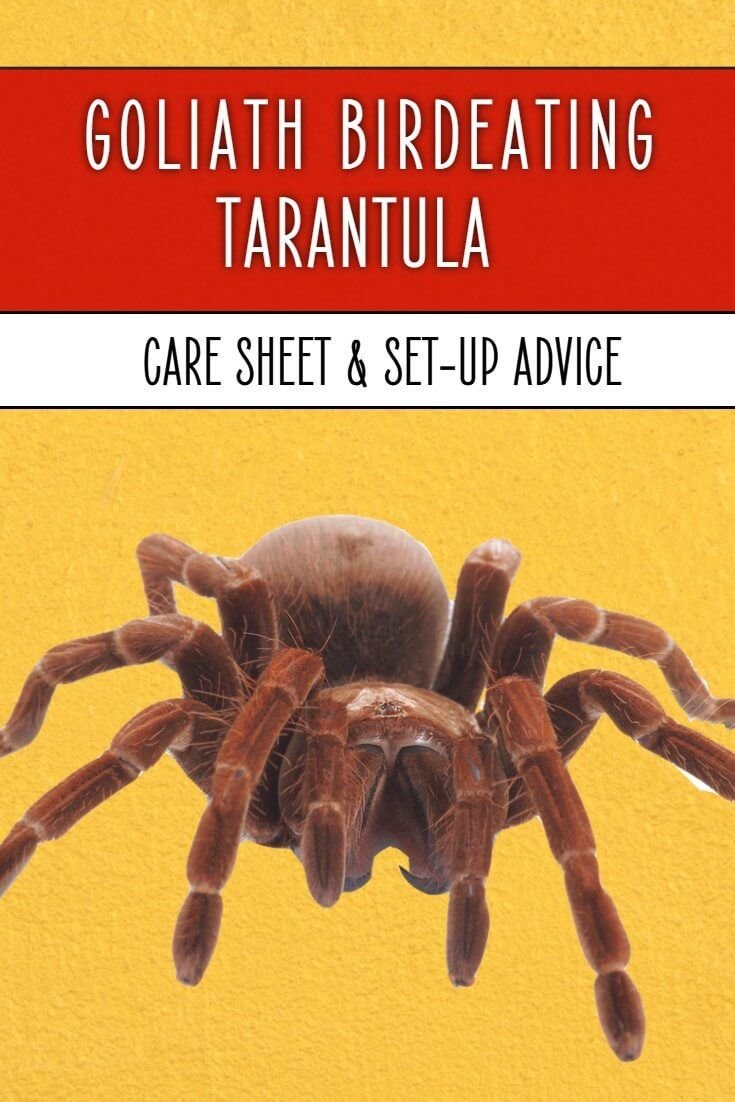
Keeping a Goliath Birdeater is like hosting a mini jungle in your living room. They require specific care and attention for them to thrive. Think of them as delicate little ecosystems that need the right balance of environment, food, and handling. So, grab a cup of coffee, and let’s dive into the world of caring for these giant spiders.
Understanding the Goliath Birdeater
The Goliath Birdeater, or *Theraphosa blondi*, is one of the largest tarantulas in the world, native to the rainforests of South America, particularly in areas like Venezuela and Suriname. They have a menacing appearance with hairy legs and a round body that can easily send shivers down your spine. But don’t let their fierce look fool you; they are generally docile creatures that prefer to flee rather than fight.
Interestingly, despite their name, Goliath Birdeaters don’t primarily eat birds. They mostly feast on insects and small mammals. Their size and hunting techniques make them fascinating subjects for arachnid lovers. Plus, their unique characteristics—like their ability to regenerate lost limbs—add to the allure of keeping one as a pet.
Setting Up the Perfect Habitat
Creating a comfortable and suitable habitat for your Goliath Birdeater is essential for its health and happiness. A spacious terrarium is a must. Ideally, you want a glass enclosure that measures at least 20 gallons. This gives your spider room to roam and establish its territory.
Substrate: Start with a deep layer of substrate, about 4-6 inches. Coco fiber or peat moss works well because it retains moisture, mimicking their natural humid environment. You can add some small rocks or pieces of bark to create hiding spots—these tarantulas love to burrow.
Humidity and Temperature: Keeping the humidity level between 70-80% is crucial. You can achieve this by misting the enclosure regularly. As for temperature, aim for 75-85°F during the day and a slight drop at night. A heating pad on one side of the tank can help achieve this climate, just be sure it doesn’t make one side too hot.
Feeding Your Goliath Birdeater
Feeding a Goliath Birdeater is one of the most enjoyable aspects of keeping this pet. Their diet mainly consists of a variety of insects, but you can also offer small vertebrates. Crickets, mealworms, roaches, and occasionally pinkie mice are great options to consider.
Feeding Schedule: Young Goliath Birdeaters should be fed every few days, while adults can be fed weekly. It’s important to offer food that’s appropriately sized. If the prey is too large, your spider might get stressed or refuse to eat.
Hydration: You should also provide a shallow water dish to keep your tarantula hydrated. Change the water regularly to prevent bacteria growth. If you notice your spider is spending a lot of time near the water dish, it might need more humidity in its habitat.
Handling Your Goliath Birdeater
Now, you might be thinking, “Can I hold my Goliath Birdeater?” It’s a valid question! While some owners do enjoy handling their spiders, it’s important to approach this delicately. Goliath Birdeaters aren’t known for being aggressive, but they can be skittish.
Handling Tips: If you decide to handle your spider, make sure to do so slowly and calmly. Always use two hands, supporting the spider’s body gently. Keep your movements smooth—quick actions can startle them, leading to potential bites or drops.
Why Handle? Handing them occasionally can help with taming and socialization, but it’s not a must. Remember, these spiders are more about observing than cuddling. They thrive best when left to explore their habitat.
Common Health Issues and Troubleshooting
Like any pet, Goliath Birdeaters can face health issues. It’s essential to monitor their behaviors and habitat conditions closely. If your spider is lethargic or losing limbs, it could be an indication of stress or poor living conditions.
Molting Issues: Molting is a natural process for tarantulas, but sometimes it can go wrong. If your spider seems stuck during molting, you can help by increasing humidity in their habitat.
Behavioral Signs: If your Goliath Birdeater is showing signs of aggression or a lack of appetite, check the temperature and humidity levels, as these factors can significantly affect their mood and health.
Goliath Birdeater vs. Other Tarantulas
If you’re contemplating different tarantulas to keep, you might wonder how the Goliath Birdeater stacks up against others. For instance, the Mexican Redknee and the Chilean Rose Hair are popular choices due to their docile nature and stunning colors.
Size and Care Needs: The Goliath Birdeater is larger and requires more specific humidity and temperature conditions compared to these other species. While the Mexican Redknee is easier to handle due to its calmer temperament, the Goliath offers a unique experience due to its impressive size and interesting behaviors.
Ultimately, the best tarantula for you depends on your comfort level, how much care you’re willing to put in, and, of course, what fascinates you the most!
Keeping a Goliath Birdeater as a pet can be incredibly rewarding for the right person. They’re not just pets; they’re living art pieces, showcasing nature’s wonders. That said, they require commitment, knowledge, and a willingness to learn about their care.
Before deciding, consider your lifestyle, your enthusiasm for learning, and how you feel about interacting with such a unique creature. If you’re ready to embrace the challenge, a Goliath Birdeater can become a captivating companion, bringing a touch of the wild into your home.

